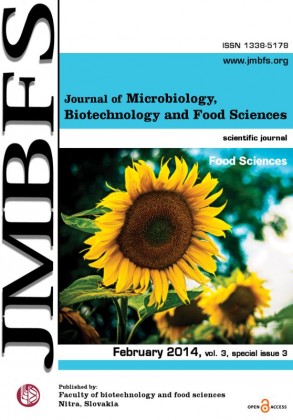RHEOLOGICAL CHARACTERISTICS OF GLUTEN-FREE DOUGH
Keywords:
gluten-free, dough, rheology, breadAbstract
Dynamic oscillation rheometry was used to determine the viscoelastic properties of gluten-free dough prepared from amaranth, chickpea, millet, corn, quinoa, buckwheat and rice flours. The viscoelastic properties was described by storage modulus G´, loss modulus G´´ and phase angle tg(δ). The relationship between viscoelastic properties of gluten-free dough and bread-making quality was evaluated. The results of this study indicated that dynamic oscillation rheometry may be used to differentiate the bread-making quality of gluten-free flour. Bread-making quality of gluten-free flour is the best characterised by curve slope of storage modulus G´and phase angle tg(δ) while bread made from the flour with storage modulus and phase angle with non-linear slope in low deformation frequencies 0.01–0.10 Hz achieved the largest volume.Downloads
Download data is not yet available.
Downloads
Published
2014-02-01
How to Cite
BureÅ¡ová, I., Buňka, F., & KráÄmar, S. (2014). RHEOLOGICAL CHARACTERISTICS OF GLUTEN-FREE DOUGH. Journal of Microbiology, Biotechnology and Food Sciences, 3(special issue 3 (Food Sciences), 195–198. Retrieved from https://office2.jmbfs.org/index.php/JMBFS/article/view/7576
Issue
Section
Food Sciences
License
Copyright (c) 2014 Iva BureÅ¡ová, FrantiÅ¡ek Buňka, Stanislav KráÄmar

This work is licensed under a Creative Commons Attribution 4.0 International License.
All papers published in the Journal of Microbiology, Biotechnology and Food Sciences are published under a CC-BY licence (CC-BY 4.0). Published materials can be shared (copy and redistribute the material in any medium or format) and adapted (remix, transform, and build upon the material for any purpose, even commercially) with specifying the author(s).

